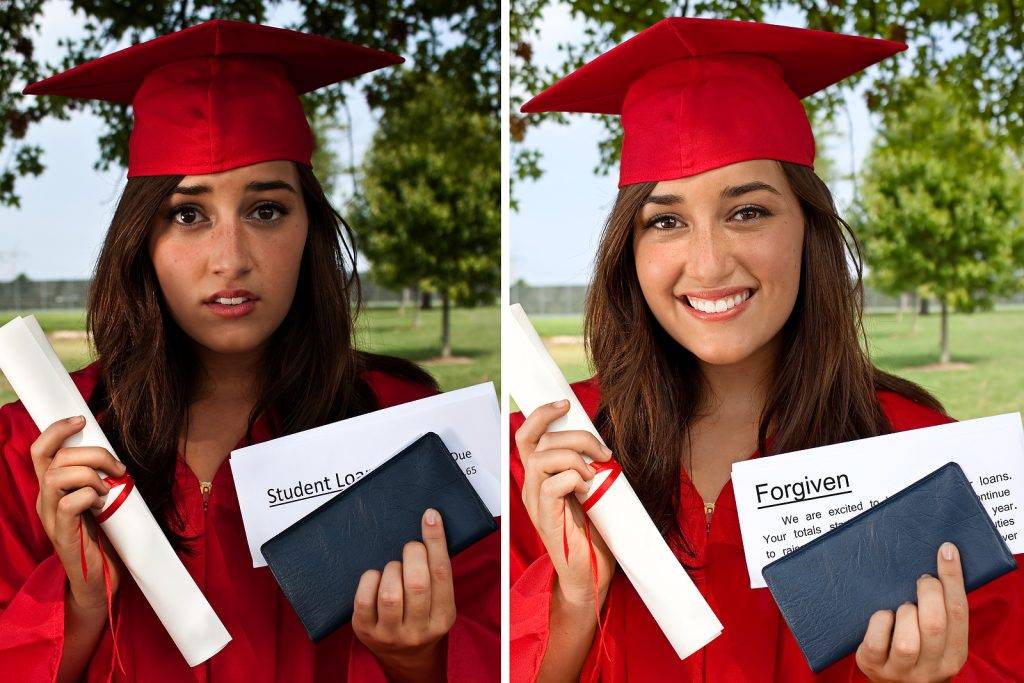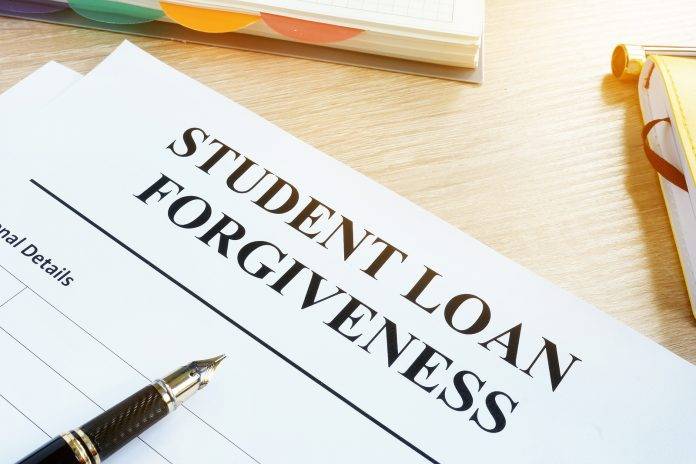In 2025, student loan forgiveness is no longer a distant hope—a rapidly evolving policy landscape affecting millions of borrowers across the United States. With sweeping changes under the Biden administration and continued legal challenges, understanding how the student loan forgiveness program works in 2025 is critical for anyone carrying federal student debt.
Table of Contents
This article breaks down the key components of student loan forgiveness in 2025, including eligibility requirements, the types of programs available, income-based repayment plans, new updates from the Department of Education, and what borrowers can expect next. Whether you’re a recent graduate, a longtime borrower, or helping someone manage their student loans, this guide clarifies a complicated but essential topic.

What Is Student Loan Forgiveness and Why It Matters in 2025
Student loan forgiveness refers to federal programs that cancel all or a portion of a borrower’s remaining debt under certain conditions. In 2025, understanding how the student loan forgiveness program works is more important than ever. According to the Federal Reserve, more than 43 million Americans owe student loans, with a collective balance of over $1.6 trillion.
Rising inflation, post-pandemic economic pressures, and increased awareness around student debt equity have pushed policymakers to revise and expand student loan forgiveness options.
Types of Student Loan Forgiveness Programs in 2025
There are multiple pathways toward student loan cancellation in 2025. Each program has specific eligibility rules, target audiences, and timelines for forgiveness.
1. Income-Driven Repayment (IDR) Forgiveness: SAVE Plan
One of the most significant changes to how the student loan forgiveness program works in 2025 is the expansion of Income-Driven Repayment (IDR) plans—especially the Saving on a Valuable Education (SAVE) plan. This program replaces the REPAYE plan and offers significantly more favorable terms.
Key features of the SAVE Plan:
- Monthly payments are based on income and family size.
- Monthly payments for undergraduate loans are capped at 5% of discretionary income.
- Forgiveness is granted after 10 years of payments if your original loan was $12,000 or less, or after 20–25 years for higher balances.
- Interest not covered by your payment is no longer added to your balance.
As of July 2025, all borrowers enrolled in SAVE will have their repayment plans recalculated under these updated terms. Learn more at StudentAid.gov/SAVE.
2. Public Service Loan Forgiveness (PSLF)
The Public Service Loan Forgiveness program continues to be a powerful option for borrowers who work in government or qualifying non-profit jobs. PSLF forgives the remaining balance of your Direct Loans after you make 120 qualifying monthly payments under a qualifying repayment plan while working full-time for an eligible employer.
2025 updates to PSLF include:
- A new online employer certification tool to simplify tracking.
- Expansion of qualifying job types to include specific health care, education, and social work roles.
- Continued credit for certain months during the COVID forbearance.
Check your eligibility and employment certification through the PSLF Help Tool.
3. Borrower Defense to Repayment
If your college misled you or engaged in misconduct, you may qualify for Borrower Defense to Repayment, which cancels your loans and can offer refunds of prior payments. As of 2025:
- The Department of Education is processing claims faster under revised rules.
- You do not need to prove financial harm—only that your school violated federal law.
- Claims related to closed institutions (like Corinthian Colleges or ITT Tech) are being fast-tracked.
Apply at the official Borrower Defense page.
4. Total and Permanent Disability Discharge
Borrowers who are totally and permanently disabled are eligible for complete loan forgiveness. In 2025, the process will be automated mainly through data matching with the Social Security Administration and Veterans Affairs.
No application is needed if you’re identified through federal data systems, though you can still apply manually at studentaid.gov/disability-discharge.

How the Student Loan Forgiveness Program Works With Legal Challenges in 2025
In June 2023, the U.S. Supreme Court blocked President Biden’s initial broad-based student loan cancellation plan that aimed to cancel up to $20,000 in debt per borrower. However, in 2024 and into 2025, the Department of Education has pursued regulatory pathways to cancel debt using the Higher Education Act of 1965.
Key developments:
- In April 2024, the Department proposed targeted debt relief for borrowers facing “hardship,” though the criteria are still being finalized.
- Legal battles continue, but courts have upheld mainly IDR and PSLF expansions within the Department’s authority.
- The Federal Register is the best place to monitor legal and regulatory updates affecting how the student loan forgiveness program works in 2025.
Who Qualifies for Student Loan Forgiveness in 2025?
Eligibility depends on your loan type, employment history, repayment plan, and sometimes your school’s accreditation or conduct history.
You’re likely eligible if you:
- Have federal Direct Loans (not private loans).
- Enroll in SAVE, PSLF, or a qualifying IDR plan.
- Have made qualifying payments or have months counted due to COVID-era pauses.
- Worked full-time in public service roles.
- Your school misled us, or we became permanently disabled.
Note: To qualify for most programs, you must consolidate older FFEL or Perkins Loans into a Direct Loan. The loan consolidation portal makes this process relatively easy.
How to Apply for Student Loan Forgiveness in 2025
Applying for forgiveness depends on the program you qualify for. Here’s a general process:
For SAVE or IDR Forgiveness:
- Enroll through StudentAid.gov.
- Submit income verification.
- Recertify annually.
- Forgiveness is automatic after the required number of years.
For PSLF:
- Submit the Employment Certification Form (ECF) annually and when changing jobs.
- Make 120 qualifying payments.
- Submit the PSLF Application for Forgiveness through StudentAid.gov/pslf.
For Borrower Defense:
- Complete an application at studentaid.gov/borrower-defense.
- Include detailed explanations and documentation about your school’s misconduct.
For Disability Discharge:
- Apply directly or wait for automatic discharge if eligible through government data matches.
What Happens After Forgiveness?
After your loans are forgiven:
- Your loan servicer will notify you and update your account.
- You will receive confirmation in writing.
- As of 2025, student loan forgiveness is tax-free through 2025 under the American Rescue Plan Act of 2021. Whether this tax benefit will be extended remains to be seen.
Constantly monitor your email and account on StudentAid.gov for updates and confirmations.
Common Pitfalls and Scams to Avoid in 2025
Regarding student loans, there are some specific red flags to look out for before you begin the application process. Here are a few things to look out for before you apply.
- Companies are charging fees to apply for forgiveness, but applications are always free through the federal government.
- Promises of immediate loan cancellation with no eligibility check.
- Phishing emails or calls posing as government agencies.
Use official websites like StudentAid.gov to avoid fraud—report scams to the FTC at ReportFraud.ftc.gov.
The Future of Student Loan Forgiveness Beyond 2025
As we move into the second half of the decade, several trends may influence how the student loan forgiveness program works in the future:
- Further automation of forgiveness for low-balance borrowers.
- New hardship-based forgiveness plans tied to economic conditions.
- Potential Congressional legislation offering more comprehensive relief.
- Increased use of AI-powered servicing platforms to streamline communication and payments.
Policymakers continue to debate whether higher education should be free, subsidized, or restructured entirely. But for now, understanding today’s programs is the best way to take control of your financial future.
Conclusion: Is Student Loan Forgiveness Possible in 2025?
Yes—student loan forgiveness in 2025 is very real and increasingly accessible to many borrowers. Whether through the SAVE plan, Public Service Loan Forgiveness, Borrower Defense, or disability discharge, millions are already seeing their balances wiped clean.
To make the most of these opportunities:
- Stay updated via StudentAid.gov.
- Review your loan type and repayment plan.
- Apply early and document everything.
FAQ: Can I get student loan forgiveness if I have just graduated?
Yes, but you’ll likely need to enter a qualifying IDR plan like SAVE and make payments for a set number of years (usually 10–25). If you pursue PSLF, you must work in a qualifying job and make 120 payments. Early planning is key—enroll now to start the clock.
Read more – Eating Poke Can Be Bad For You, Here is Why


